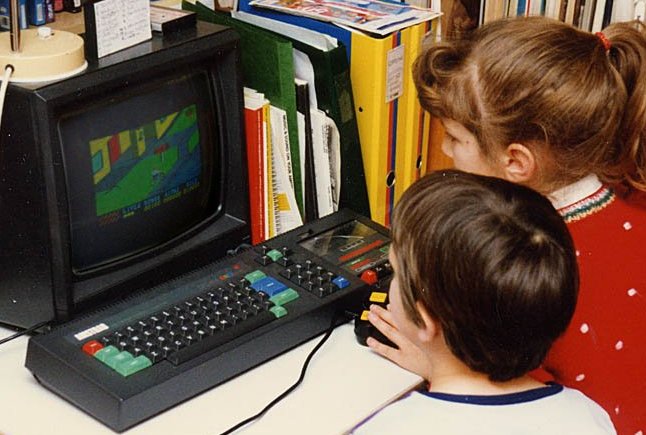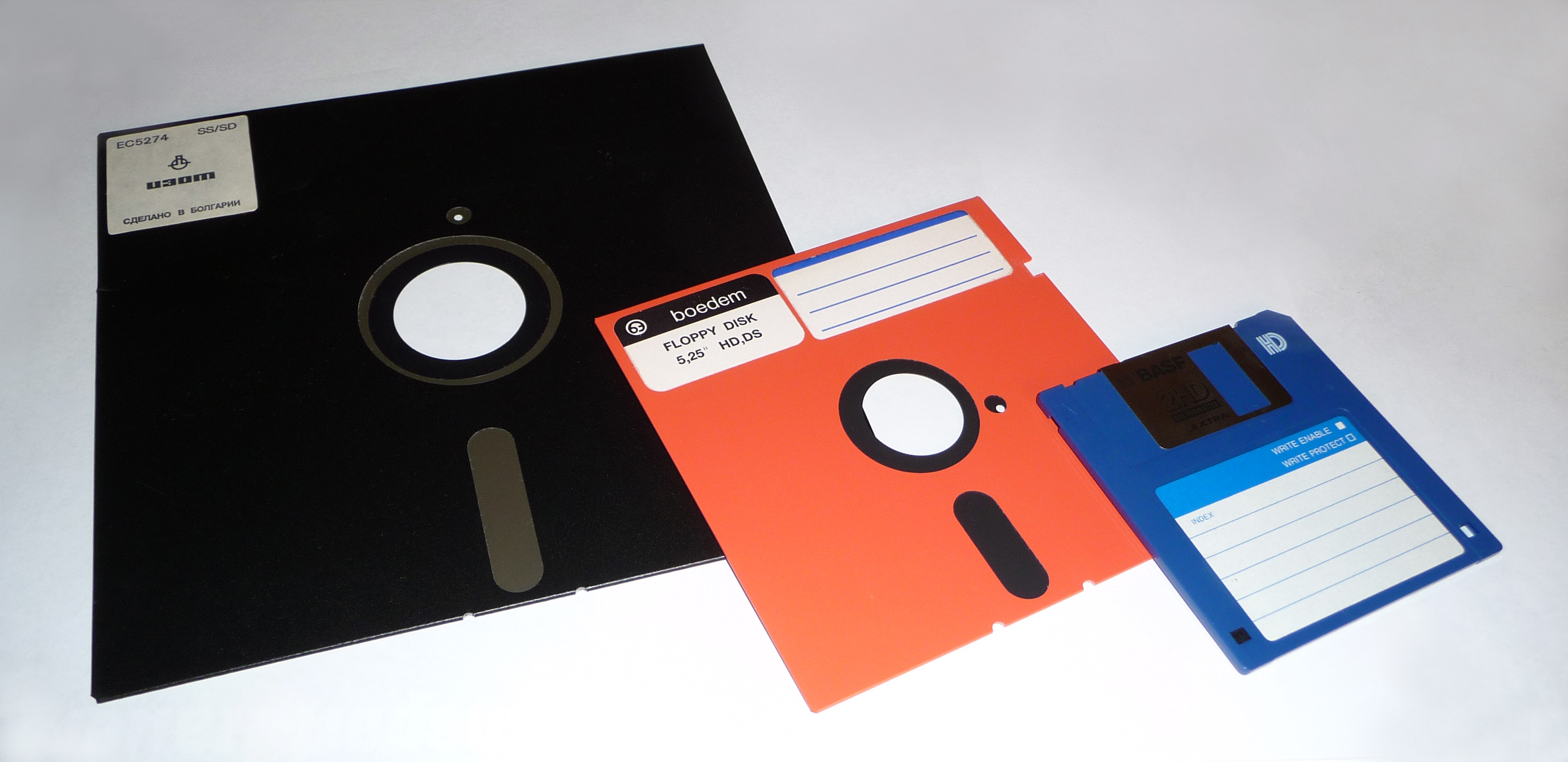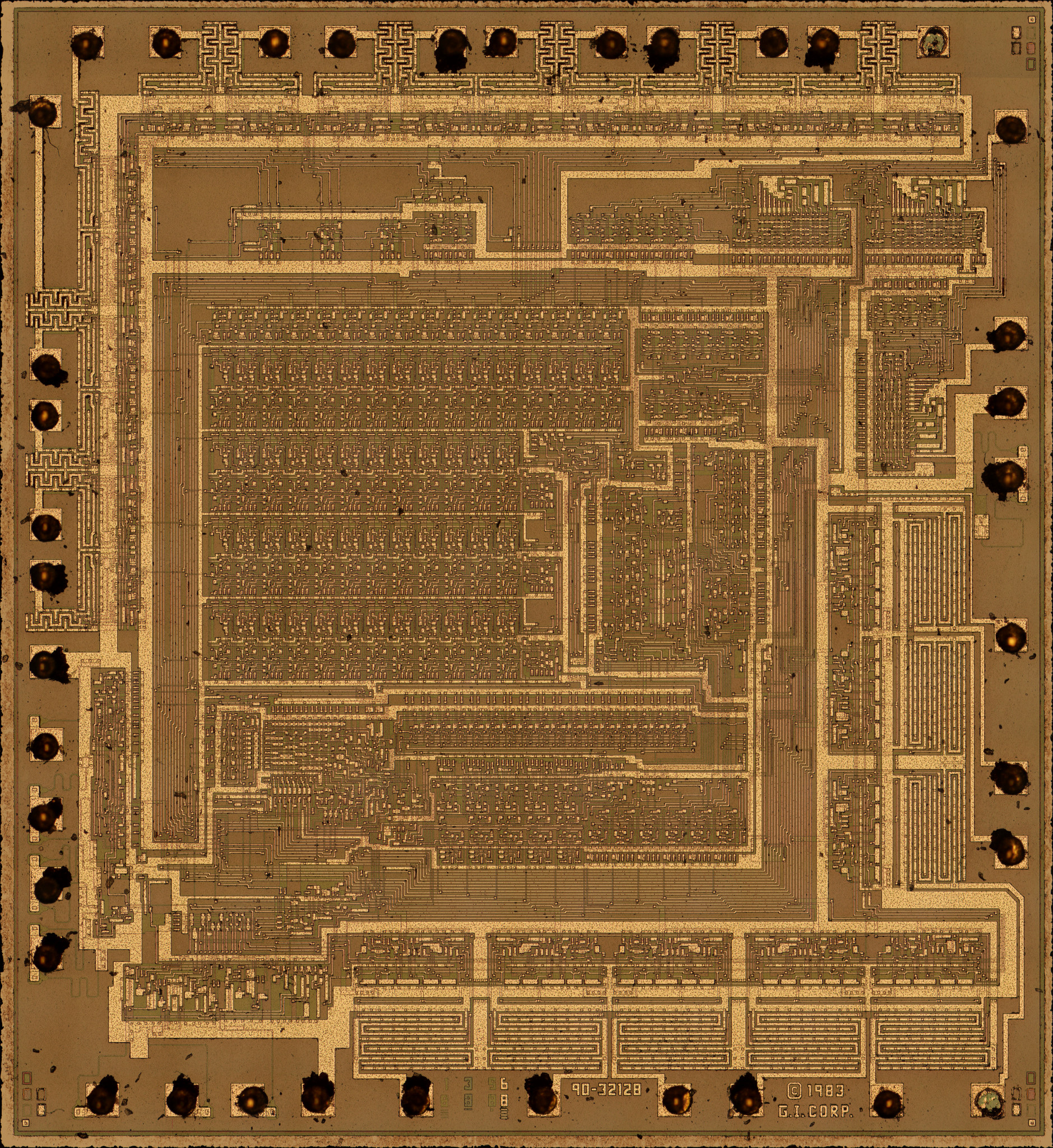|
Mattel Aquarius
The Aquarius is a home computer designed by ''Radofin'' and released by ''Mattel Electronics'' in 1983. Based on the Zilog Z80 microprocessor, the system has a rubber chiclet keyboard, 4 kB of RAM, and a subset of Microsoft BASIC in ROM. It connects to a television set for audiovisual output, and uses a cassette tape, cassette tape recorder for secondary data storage. A limited number of peripherals, such as a 40-column thermal printer, a 4-color printer/plotter, and a 300 baud modem, were released. The Aquarius was discontinued in October 1983, only a few months after it was launched. Development Looking to compete in the home computer market, ''Mattel Electronics'' turned to ''Radofin'', the Hong Kong based manufacturer of their Intellivision consoles. ''Radofin'' had designed two computer systems. Internally they were known as "Checkers" and the more sophisticated "Chess". Mattel contracted for these to become the Aquarius and Aquarius II, respectively. Aquarius was announced ... [...More Info...] [...Related Items...] OR: [Wikipedia] [Google] [Baidu] |
Home Computer
Home computers were a class of microcomputers that entered the market in 1977 and became common during the 1980s. They were marketed to consumers as affordable and accessible computers that, for the first time, were intended for the use of a single, non-technical user. These computers were a distinct market segment that typically cost much less than business, scientific, or engineering-oriented computers of the time, such as those running CP/M or the IBM PC, and were generally less powerful in terms of computer memory, memory and expandability. However, a home computer often had better video display controller, graphics and sound than contemporary business computers. Their most common uses were word processing, playing video games, and computer programming, programming. Home computers were usually sold already manufactured in stylish metal or plastic enclosures. However, some home computers also came as commercial electronic kits, like the ZX80, Sinclair ZX80, which were both h ... [...More Info...] [...Related Items...] OR: [Wikipedia] [Google] [Baidu] |
Cassette Tape
The Compact Cassette, also commonly called a cassette tape, audio cassette, or simply tape or cassette, is an analog audio, analog magnetic tape recording format for Sound recording and reproduction, audio recording and playback. Invented by Lou Ottens and his team at the Netherlands, Dutch company Philips, the Compact Cassette was released in August 1963. Compact Cassettes come in two forms, either containing content as a prerecorded cassette (''Musicassette''), or as a fully recordable "blank" cassette. Both forms have two sides and are reversible by the user. Although List of magnetic tape cartridges and cassettes, other tape cassette formats have also existed—for example the Microcassette—the generic term ''cassette tape'' is normally used to refer to the Compact Cassette because of its ubiquity. From 1983 to 1991 the cassette tape was the most popular Timeline of audio formats, audio format for new Record sales, music sales in the United States. Compact Cassettes con ... [...More Info...] [...Related Items...] OR: [Wikipedia] [Google] [Baidu] |
Character Set
Character encoding is the process of assigning numbers to graphical characters, especially the written characters of human language, allowing them to be stored, transmitted, and transformed using computers. The numerical values that make up a character encoding are known as code points and collectively comprise a code space or a code page. Early character encodings that originated with optical or electrical telegraphy and in early computers could only represent a subset of the characters used in written languages, sometimes restricted to upper case letters, numerals and some punctuation only. Over time, character encodings capable of representing more characters were created, such as ASCII, the ISO/IEC 8859 encodings, various computer vendor encodings, and Unicode encodings such as UTF-8 and UTF-16. The most popular character encoding on the World Wide Web is UTF-8, which is used in 98.2% of surveyed web sites, as of May 2024. In application programs and operating syste ... [...More Info...] [...Related Items...] OR: [Wikipedia] [Google] [Baidu] |
All-points-addressable
A dot matrix is a 2-dimensional patterned array, used to represent characters, symbols and images. Most types of modern technology use dot matrices for display of information, including mobile phones, televisions, and printers. The system is also used in textiles with sewing, knitting and weaving. An alternate form of information display using lines and curves is known as a vector display, was used with early computing devices such as air traffic control radar displays and pen-based plotters but is no longer used. Electronic vector displays were typically monochrome only, and either leave the interiors of closed vector shapes unfilled, or perform slow, time-consuming and often non-uniform shape-filling, as on pen-based plotters. In printers, the dots are usually the darkened areas of the paper. In displays, the dots may light up, as in an LED, CRT, or plasma display, or darken, as in an LCD. Use in computers Although the output of modern computers is generally all in the fo ... [...More Info...] [...Related Items...] OR: [Wikipedia] [Google] [Baidu] |
VIC-20
The VIC-20 (known as the VC-20 in Germany and the VIC-1001 in Japan) is an 8-bit entry level home computer that was sold by Commodore International, Commodore Business Machines. The VIC-20 was announced in 1980, roughly three years after Commodore's first personal computer, the Commodore PET, PET. The VIC-20 was the first computer of any description to sell one million units, eventually reaching 2.5 million. It was described as "one of the first anti-spectatorial, non-esoteric computers by design...no longer relegated to hobbyist/enthusiasts or those with money, the computer Commodore developed was the computer of the future." History As the Apple II gained momentum with the advent of VisiCalc in 1979, Jack Tramiel wanted a product that would compete in the same segment, to be presented at the January 1980 Consumer Electronics Show, CES. For this reason Chuck Peddle and Bill Seiler started to design a computer named ''TOI'' (The Other Intellect). The TOI computer failed to m ... [...More Info...] [...Related Items...] OR: [Wikipedia] [Google] [Baidu] |
TI-99/4A
The TI-99/4 and TI-99/4A are home computers released by Texas Instruments (TI) in 1979 and 1981, respectively. Based on TI's own TMS9900 microprocessor originally used in minicomputers, the TI-99/4 was the first 16-bit home computer. The associated TMS9918 video display controller provides color graphics and Sprite (computer graphics), sprite support which were only comparable with those of the Atari 8-bit computers, Atari 400 and 800 released a month later. The TI-99 series also initially competed with the Apple II and TRS-80."Death of a Computer," April 1984, ''Texas Monthly,'' retrieved September 20, 2023 The calculator-style keyboard of the TI-99/4 and the high price were cited as weak points. TI's reliance on ROM cartridges and their practice of limiting develo ... [...More Info...] [...Related Items...] OR: [Wikipedia] [Google] [Baidu] |
Haus Der Computerspiele - Mattel Aquarius
Haus is a Germanic word meaning ''house''. It may refer to: People * Anton Haus (1851–1917), Austrian grand admiral, fleet commander of the Austro-Hungarian Navy in World War I * Georg Haus (1895–1945), German general * Hermann A. Haus (1925–2003), Slovene-American physicist, electrical engineer and Institute Professor at the Massachusetts Institute of Technology * Jacques-Joseph Haus (1796–1881), Belgian lawyer and professor * Julie Haus (b. 1973), American fashion designer * Knut Haus (1915–2006), Norwegian politician * Samuel Haus (born 1990), Swedish actor Places * Haus, Norway, a former municipality in Hordaland county, Norway * Haus or Hausvik, a village in Osterøy municipality in Vestland county, Norway ** Haus Church, parish church in Hausvik * Haus im Ennstal, city in Styria, Austria Buildings * Haus am Horn, historic home in Weimar, Germany * Haus Auensee, concert hall in Leipzig, Germany * Haus Bamenohl, castle in North Rhine-Westpha ... [...More Info...] [...Related Items...] OR: [Wikipedia] [Google] [Baidu] |
Quick Disk
A floppy disk is a disk storage medium composed of a thin and flexible magnetic storage medium encased in a rectangular plastic carrier. It is read and written using a floppy disk drive (FDD). Floppy disks were an almost universal data format from the 1970s into the 1990s, used for primary data storage as well as for backup and data transfers between computers. In 1967, at an IBM facility in San Jose, California, work began on a drive that led to the world's first floppy disk and disk drive. It was introduced into the market in an format in 1971. The more conveniently sized 5¼-inch disks were introduced in 1976, and became almost universal on dedicated word processing systems and personal computers. This format was more slowly replaced by the 3½-inch format, first introduced in 1982. There was a significant period where both were popular. A number of other variant sizes were introduced over time, with limited market success. Floppy disks remained a popular medium for nearly ... [...More Info...] [...Related Items...] OR: [Wikipedia] [Google] [Baidu] |
Thermal Printing
Thermal printing (or direct thermal printing) is a digital printing process which produces a printed image by passing paper with a Thermochromism, thermochromic coating, commonly known as thermal paper, over a print head consisting of tiny electrically heated elements. The coating turns black in the areas where it is heated, producing an image. Most thermal printers are monochrome (black and white) although some two-color designs exist. Grayscale is usually rasterized because it can only be adjusted by temperature control. Thermal-transfer printing is a different method, using plain paper with a heat-sensitive ribbon instead of heat-sensitive paper, but using similar print heads. Thermal transfer printer require the use of wax-based ribbons that adhere to the substrate during the printing process. As a result, users must load both labels and ribbon, essentially using an alternative ink system. Design A thermal printer typically contains at least these components: * Therm ... [...More Info...] [...Related Items...] OR: [Wikipedia] [Google] [Baidu] |
General Instrument AY-3-8910
The AY-3-8910 is a 3-voice programmable sound generator (PSG) designed by General Instrument (GI) in 1978, initially for use with their 16-bit computing, 16-bit General Instrument CP1600, CP1610 or one of the PIC microcontrollers, PIC1650 series of 8-bit computing, 8-bit microcomputers. The AY-3-8910 and its variants were used in many arcade games—Konami's ''Gyruss'' contains five—and Bally pinball machines as well as being the sound chip in the Intellivision and Vectrex video game consoles, and the Amstrad CPC, Oric-1, Colour Genie, Elektor TV Games Computer, MSX, Tiki 100 and later ZX Spectrum home computers. It was also used in the Mockingboard and Cricket sound cards for the Apple II and the Speech/Sound Cartridge for the TRS-80 Color Computer. After GI's spinoff of Microchip Technology in 1987, the chip was sold for a few years under the Microchip brand. It was also manufactured under license by Yamaha Corporation, Yamaha (with a selectable clock divider pin a ... [...More Info...] [...Related Items...] OR: [Wikipedia] [Google] [Baidu] |
ROM Cartridge
A ROM cartridge, usually referred to in context simply as a cartridge, cart, cassette, or card, is a replaceable part designed to be connected to a consumer electronics device such as a home computer, video game console or, to a lesser extent, electronic musical instruments. Read-Only Memory, ROM cartridges allow users to rapidly load and access programs and data alongside a floppy drive in a home computer; in a video game console, the cartridges are standalone. At the time around their release, ROM cartridges provided security against Software copyunauthorised copying of software. However, the manufacturing of ROM cartridges was more expensive than floppy disks, and the storage capacity was smaller. ROM cartridges and slots were also used for various hardware accessories and enhancements. The widespread usage of the ROM cartridge in video gaming applications has led it to be often colloquially called a game cartridge. History ROM cartridges were popularized by early home ... [...More Info...] [...Related Items...] OR: [Wikipedia] [Google] [Baidu] |
Hong Kong
Hong Kong)., Legally Hong Kong, China in international treaties and organizations. is a special administrative region of China. With 7.5 million residents in a territory, Hong Kong is the fourth most densely populated region in the world. Hong Kong was established as a colony of the British Empire after the Qing dynasty ceded Hong Kong Island in 1841–1842 as a consequence of losing the First Opium War. The colony expanded to the Kowloon Peninsula in 1860 and was further extended when the United Kingdom obtained a 99-year lease of the New Territories in 1898. Hong Kong was occupied by Japan from 1941 to 1945 during World War II. The territory was handed over from the United Kingdom to China in 1997. Hong Kong maintains separate governing and economic systems from that of mainland China under the principle of one country, two systems. Originally a sparsely populated area of farming and fishing villages,. the territory is now one of the world's most signific ... [...More Info...] [...Related Items...] OR: [Wikipedia] [Google] [Baidu] |









